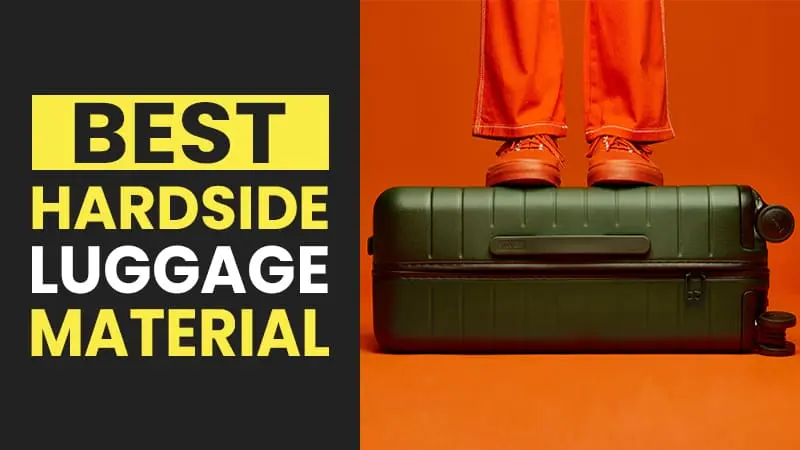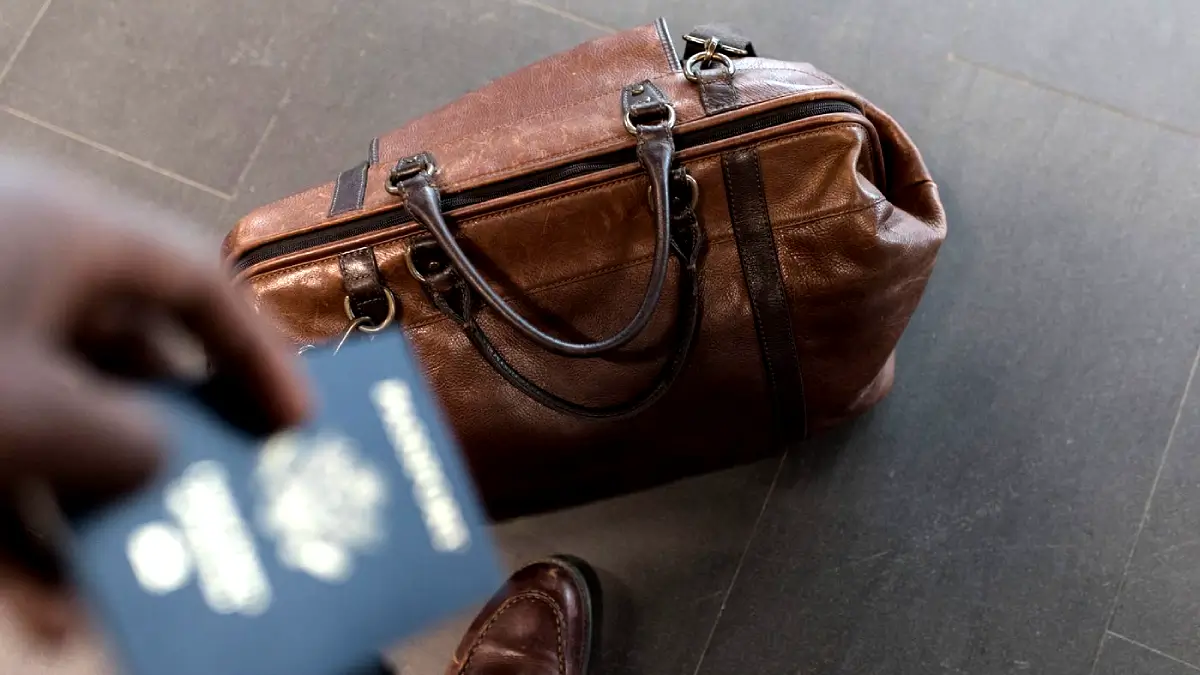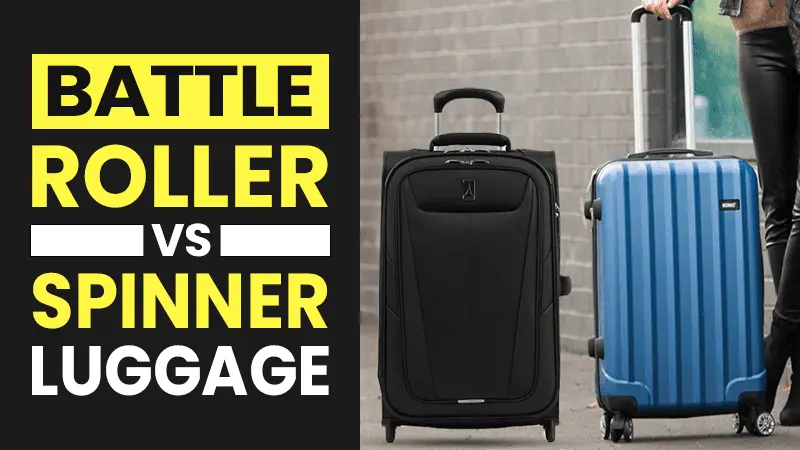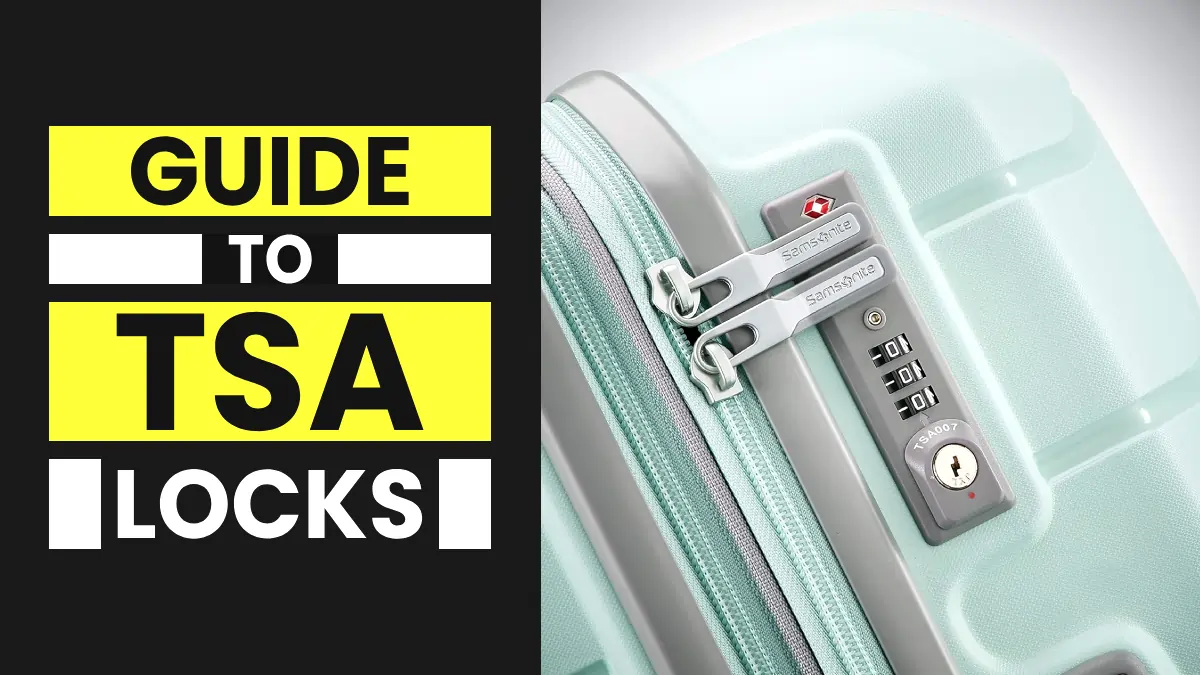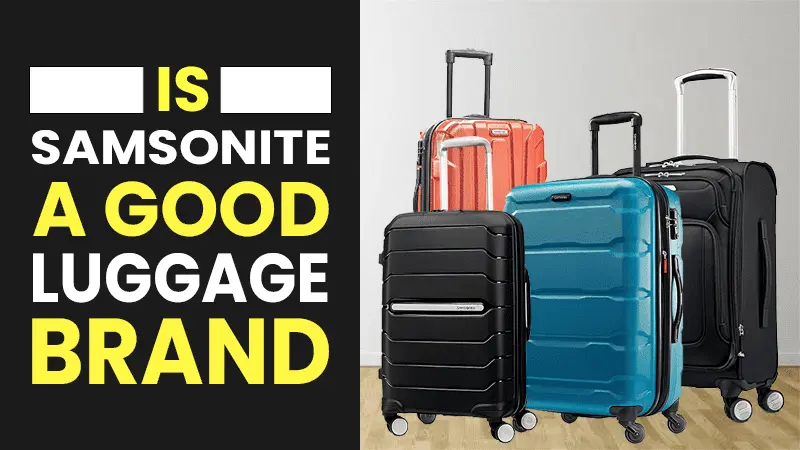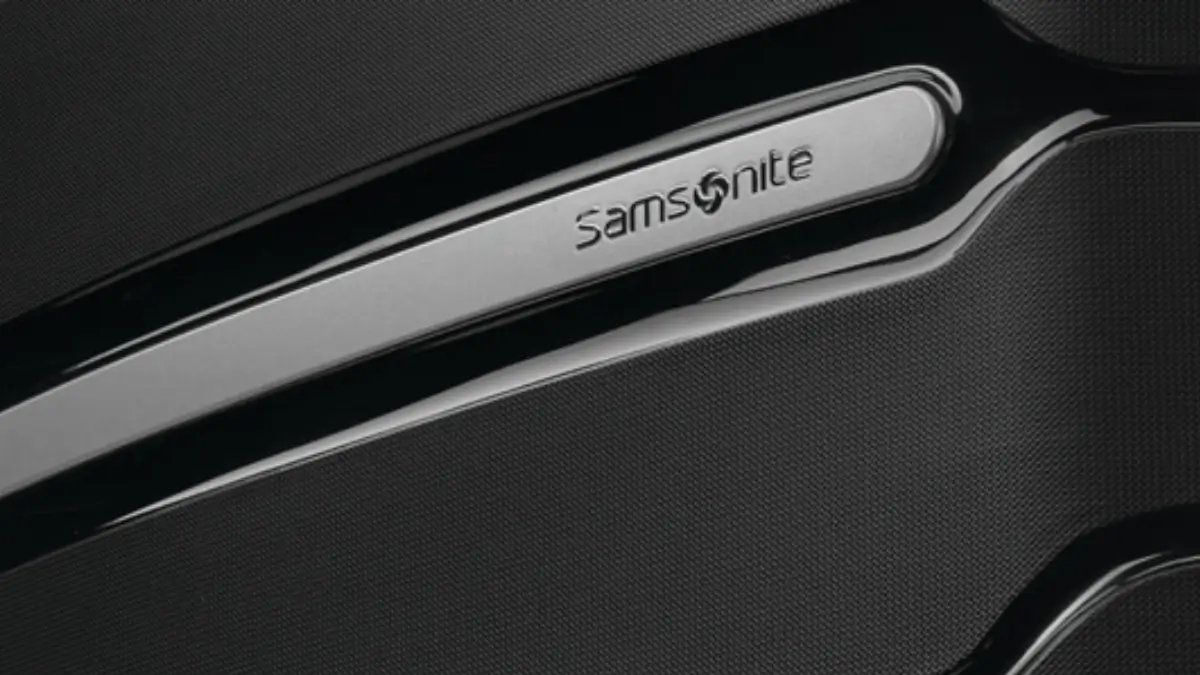Best Hardside Luggage Material, according to Industry Specialists: 2024 Updated
Luggage is one of the most important essentials while traveling, and when it comes to durability and longevity, hardside luggage becomes the first choice, but the main challenge is to find the best hardside luggage material.
There are plenty of luggage materials available in the market, like Polycarbonate, Polypropylene, ABS, ABS/PC Composite, Aluminum, etc. You may be worried about how to choose the best material for hardside luggage. Don’t worry at all.
In this guide, I’ll help you understand each type of material mentioned above, explore the advantages and disadvantages of each type, and finally let you know which material you should consider.
By the end of this guide, you’ll be able to make an informed and right decision about which one is the best hardside luggage material.
Types of Hardside Luggage Materials
- ABS
- Polycarbonate
- Polypropylene
- ABS/PC Composite
- Aluminum
ABS (Acrylonitrile Butadiene Styrene)
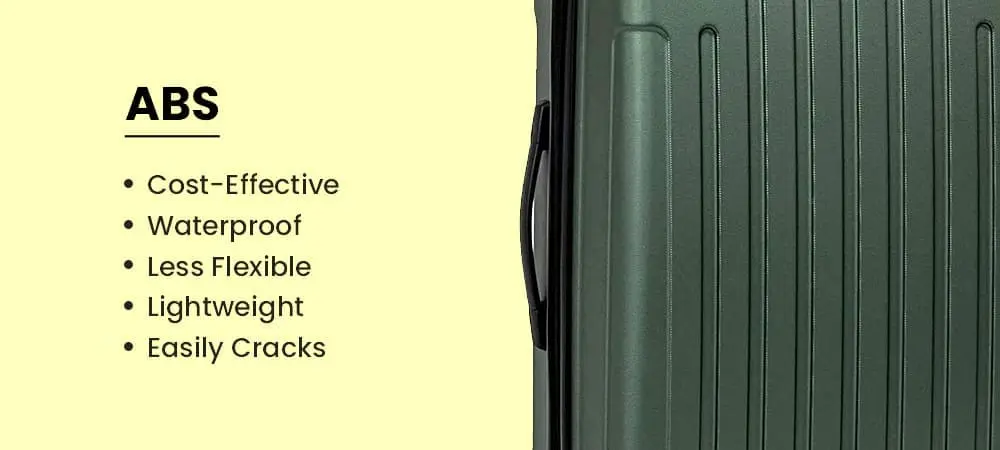
ABS stands for Acrylonitrile Butadiene Styrene and it is a combination of three different materials. This material is used not only in making suitcases but also in many other industries for different types of products.
It’s a popular but not as popular material as polycarbonate, and research says that 30% of hardside suitcases are made from ABS, but well-established and reputed brands generally don’t use ABS in manufacturing their suitcases or luggage.
One of the key benefits of ABS is that it is a cost-effective option compared to other materials, making it a popular choice for budget-friendly luggage options. ABS suitcases lie between $50 and $150, on average, you can get them for $100 or even less.
This ABS material is less strong and flexible as compared to polycarbonate and polypropylene materials, and because of its non-flexible nature, it’s more likely to crack or be damaged. That’s why quality and durability have always been issues with this material.
I’d never recommend ABS luggage to those who are planning on checking in their luggage because this material is more likely to be damaged because of the way baggage handlers deal with luggage at airports.
You should consider luggage made with this material only if your budget is extremely tight and you can’t stretch it a little, or if you prefer to replace or change your luggage from time to time.
If you stretch your budget a little, you can get the one with the best quality and durability, and you don’t have to change it from time to time.
Also Read: Do Airlines Prefer Hard or Soft Luggage
Polycarbonate

Polycarbonate is one of the most popular materials, which is justified because 50% of hardside suitcases are made from polycarbonate material. This material is also used in manufacturing different types of products, including hard-shell luggage.
It is a popular choice because of its combination of durability, flexibility, and lightweight properties. It is so flexible that if you try to break something, it’ll always bounce off. This is what proves its incredible strength.
Polycarbonate is known for its high impact resistance, making it an ideal material for luggage. It is also highly resistant to heat and UV radiation, ensuring that the luggage retains its original appearance over time.
When it comes to weight, polycarbonate becomes the heaviest among other plastic luggage options like ABS and polypropylene. But that’s not that much; it’s only 12% heavier when you compare it with polypropylene, the lightest material. That’s why weight is not a concern when it comes to polycarbonate.
But because polycarbonate is one of the best and most durable materials, it comes at a cost. Comparatively, it’s more expensive than polypropylene and ABS.
The price range for polycarbonate luggage lies between $100 and $1,000, depending on the size, features, and design. You can easily get a piece of PC luggage for under $200.
Whether you’re a frequent flyer or simply need a reliable piece of luggage for your next trip, polycarbonate hard-shell luggage might be the perfect solution for you.
Also Read: Polycarbonate vs Aluminum Luggage Which is Better?
Polypropylene
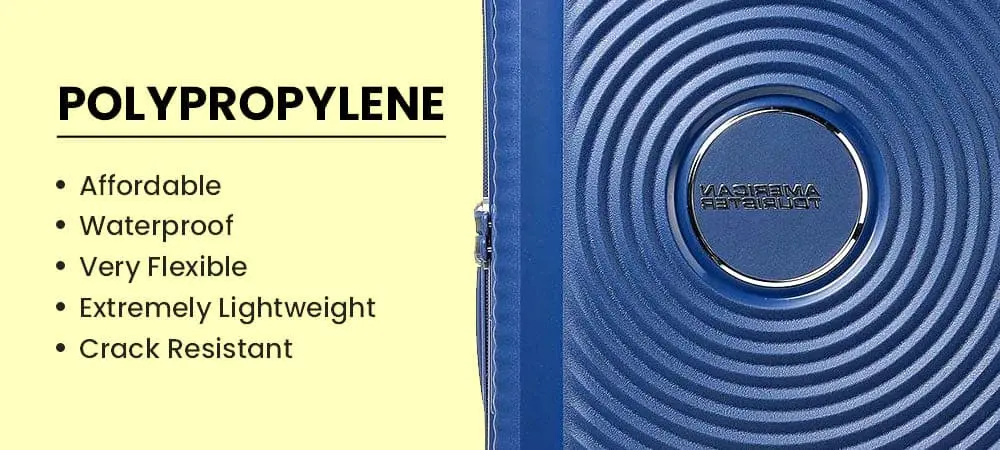
Polypropylene is less popular among people because this material is rarely used in luggage or suitcases when compared to ABS or polycarbonate. Research states that only 8% of all hardside luggage is made from polypropylene.
When it comes to plastic luggage, polypropylene is the lightest material that is used in hardside luggage. The durability and strength of polypropylene lie between ABS and polycarbonate materials.
It’s more durable when compared to ABS, but not as durable as polycarbonate. If you’re a frequent traveler, you can go for it.
But in reality, polypropylene seems to be cheaper because of its extremely lightweight structure. When it comes to flexibility, polypropylene is more flexible than ABS but, at the same time, less flexible than polycarbonate.
That’s why the strength of polypropylene also lies between ABS and polycarbonate.
The price range of polypropylene luggage is very close to that of polycarbonate luggage. As I mentioned above, you can get strong and beautiful polypropylene luggage for under $200.
But if you’re planning to spend this much, then I’d highly recommend you go for polycarbonate luggage instead of polypropylene.
One of the best polypropylene luggage brands is the Samsonite Freeform Spinner, which you can get for a very reasonable amount. Because of its durability and lightweight, it’s a recommendation from me if you’re planning to go with polypropylene luggage.
Recommended: What Is 62 Linear Inches Luggage Rule By Airlines?
ABS/PC Composite
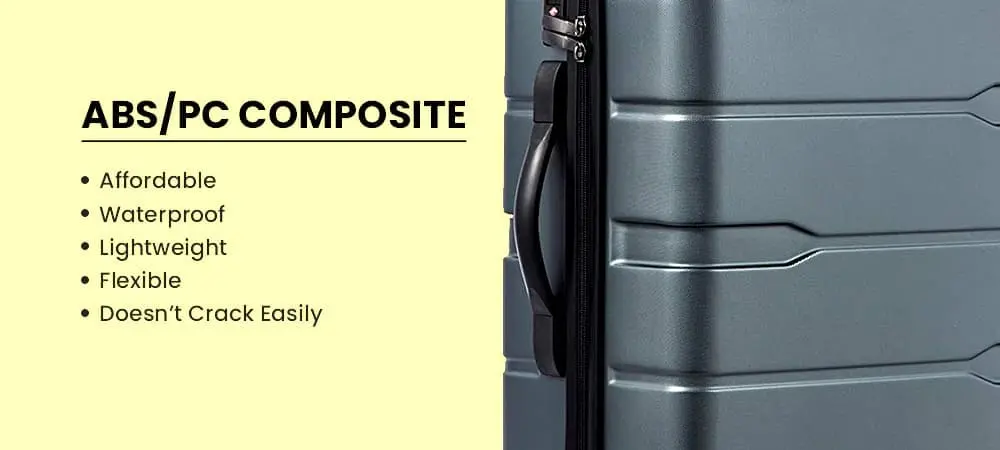
Another material, ABS/PC composite, is also popular for hardside luggage due to its durability and lightweight properties. This material is a composition of Acrylonitrile Butadiene Styrene and Polycarbonate.
Because of this composition, the resulting material offers the best of both materials, high strength and impact resistance with a lightweight structure.
They are more durable than normal ABS luggage, but not as durable as polycarbonate ones. This is an improved version of ABS made with an added polycarbonate layer on its exterior that minimizes the chances of damage. This material is more flexible than normal pure ABS, but still not as much as polycarbonate.
When it comes to its weight, it’s the second-lightest plastic material for hardside luggage. The durability of this material lies between ABS and polycarbonate. It’s more durable than ABS and less durable than a piece of polycarbonate luggage.
The best example of ABS and PC luggage is the Coolife hardside spinner. You can get it at a very reasonable rate and enjoy your journey. It’ll surely be a great choice for you.
Also Read: Best Soft-Sided Luggage Material
Aluminum

Aluminum is considered one of the most premium materials, and it targets the premium segment. A study says that out of 100 hardside luggage pieces, only 7-8 are made from aluminum. That is really a small number when compared to polycarbonate luggage.
It’s the most durable and long-lasting option available on the market. It cannot break or crack; this material usually dents. That means that if you try to hit it with a hammer or something, you can repair it by just hitting it from the other side. That’s really convenient.
Aluminum luggage is extremely durable and robust, and it does very well to protect belongings. Along with that, it can handle different types of weather and temperatures. The most important thing is that it’s waterproof.
When compared to polypropylene, the lightest hardside luggage material, aluminum luggage is generally one and a half times heavier. This is how it becomes the heaviest and most premium material
Rimova is a prominent aluminum luggage manufacturer brand; they mostly deal with aluminum luggage and are known for it.
Because of all these properties, it comes at a great cost, and the most important thing about aluminum luggage is that it is the most expensive, unlike other materials of luggage.
However, I don’t recommend aluminum luggage because of its high price. You can get at least three, or sometimes four, polycarbonate bags for the price of one aluminum bag. But if you want to look more premium and stand out in the crowd, you can definitely go with aluminum luggage.
As I mentioned above, this material comes at a cost that ranges between $600 and $1500. You can get an extremely strong and durable suitcase for under $1200.
You can get plenty of aluminum luggage from Amazon for under $500, but I’d highly recommend you go with some recognized and well-established brands like Rimova and Away.
Recommended for You: Is Aluminum Luggage Worth the Investment?
Quick Summary of Each Hardside Luggage Material
Summing up all the points, it can be said that the lightest material for hardside luggage is polypropylene, followed by ABS/PC composite, ABS, polycarbonate, and then aluminum.
Polypropylene is the lightest, while polycarbonate material is the heaviest among hardside plastic luggage.
Aluminum is the most expensive and heaviest material.
Comparison Table of Hardside Luggage Materials
| MATERIAL | WEIGHT | STRENGTH | DURABILITY | COST |
|---|---|---|---|---|
| ABS | Light | Weak | Low | Low |
| POLYCARBONATE | Medium | Great | Great | Medium |
| POLYPROPYLENE | Light | Average | Average | Medium |
| ABS/PC COMPOSITE | Light | Good | Good | Low |
| ALUMINUM | Heavy | Great | Great | High |
Also read: Are Luggage Covers Allowed By TSA?
Benefits and Drawbacks of Hardside Luggage
Benefits:
- Provides excellent protection for fragile items inside the luggage
- Most of them are lightweight, except for Aluminum
- Resistant to water and weather
- Can’t be overpacked because of its rigid frame
- Can be cleaned without much effort
- Most of them come with TSA-approved locks
- More stylish than softside luggage
- Most of them come with expansion capabilities
- Zipperless options are available
Drawbacks
- Rarely, the outer pocket comes in hardside luggage
- 10–35% heavier than fabric luggage
- Can’t be squeezed in tight overhead compartments
- Easier to get scratched. Consider using a luggage cover to reduce scratches
Also Read: Samsonite vs Delsey Paris Luggage Brands
Closing Thoughts: Which Material is the Best for Hardside Luggage?
For Business People and Those Who Travel Frequently:
Polycarbonate is the one you should go for, as it comes with high build quality, flexibility, and strength. This material is recommended because it’s not as heavy as aluminum and lasts for many years and hundreds of trips.
It comes with multiple designs and color options you can choose whichever you like most.
For Those Who are too Concerned About the Weight of Luggage:
Polypropylene should be the first choice for you because you’re too concerned about the weight of your luggage. Polypropylene has ultralight properties. It also has flexibility as a polycarbonate material; you can use it without any issues for a long time.
However, you can also have a look at polycarbonate luggage, which is more durable than polypropylene but not as lightweight as polypropylene. Polycarbonate is a little heavier than polypropylene, but that little weight is negligible when it comes to quality and longevity.
For Those Who Travel for Leisure:
Here, ABS/PC composite material should be the priority because, as a leisure traveler, you’ll probably not travel regularly, and ABS/PC can do a good job here.
But it’s not recommended for those who have to check in their luggage.
For Those Who Love to Be Premium and Travel Extremely Frequently:
Aluminum can be the best available option as it’s the most durable material, but at the same time, it’s heavier. I’d recommend you go with some trusted and well-established brands like Rimova and Away.

